Tianshu Hou
Multilayer Perceptron Based Stress Evolution Analysis under DC Current Stressing for Multi-segment Wires
May 17, 2022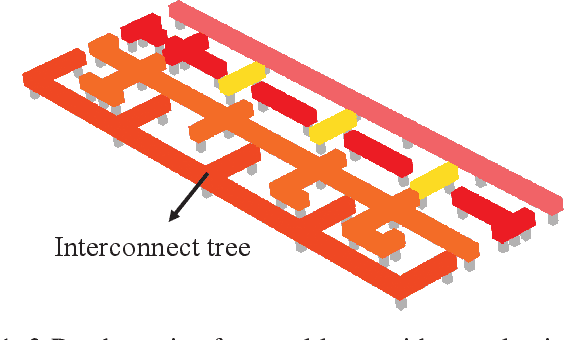
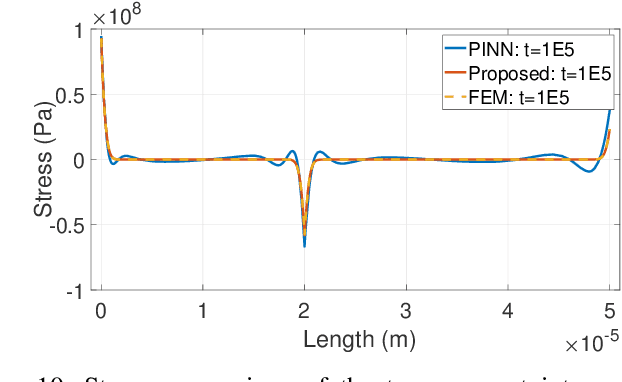
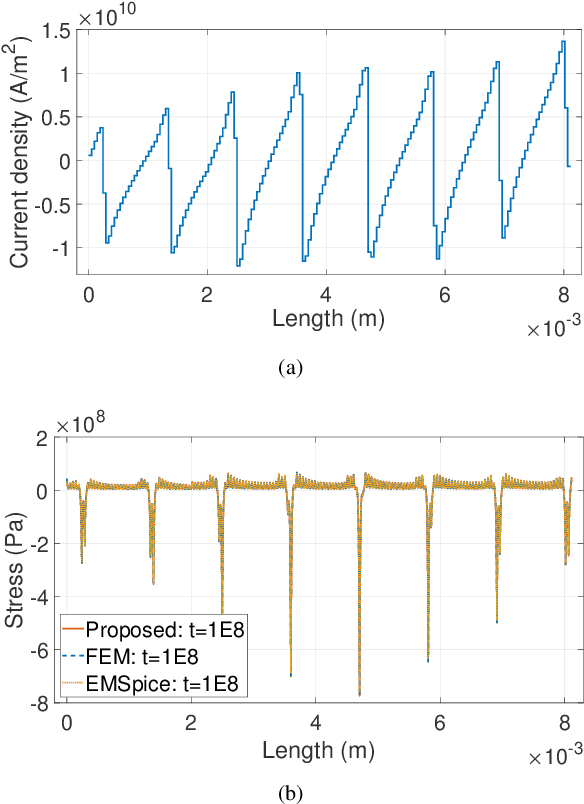
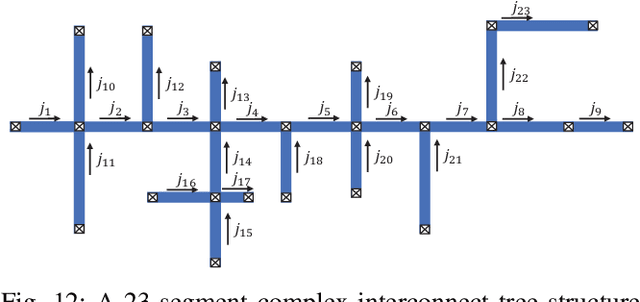
Abstract:Electromigration (EM) is one of the major concerns in the reliability analysis of very large scale integration (VLSI) systems due to the continuous technology scaling. Accurately predicting the time-to-failure of integrated circuits (IC) becomes increasingly important for modern IC design. However, traditional methods are often not sufficiently accurate, leading to undesirable over-design especially in advanced technology nodes. In this paper, we propose an approach using multilayer perceptrons (MLP) to compute stress evolution in the interconnect trees during the void nucleation phase. The availability of a customized trial function for neural network training holds the promise of finding dynamic mesh-free stress evolution on complex interconnect trees under time-varying temperatures. Specifically, we formulate a new objective function considering the EM-induced coupled partial differential equations (PDEs), boundary conditions (BCs), and initial conditions to enforce the physics-based constraints in the spatial-temporal domain. The proposed model avoids meshing and reduces temporal iterations compared with conventional numerical approaches like FEM. Numerical results confirm its advantages on accuracy and computational performance.
A Space-Time Neural Network for Analysis of Stress Evolution under DC Current Stressing
Mar 29, 2022
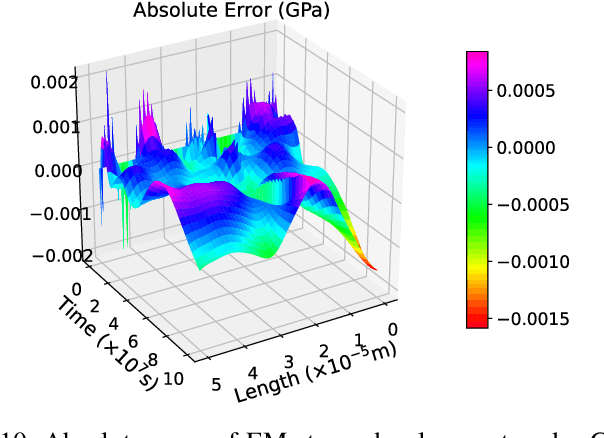
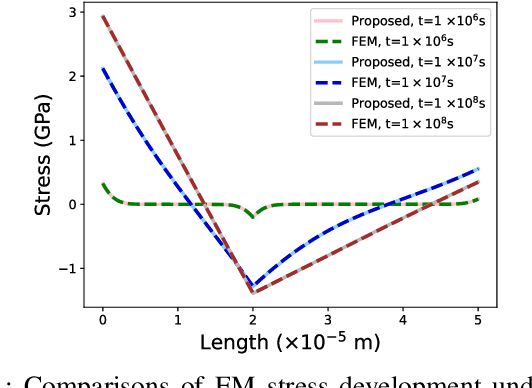
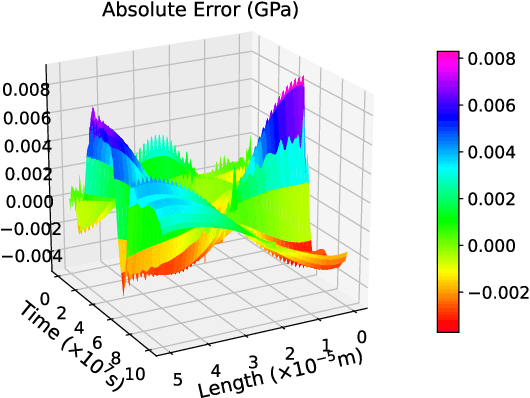
Abstract:The electromigration (EM)-induced reliability issues in very large scale integration (VLSI) circuits have attracted increased attention due to the continuous technology scaling. Traditional EM models often lead to overly pessimistic prediction incompatible with the shrinking design margin in future technology nodes. Motivated by the latest success of neural networks in solving differential equations in physical problems, we propose a novel mesh-free model to compute EM-induced stress evolution in VLSI circuits. The model utilizes a specifically crafted space-time physics-informed neural network (STPINN) as the solver for EM analysis. By coupling the physics-based EM analysis with dynamic temperature incorporating Joule heating and via effect, we can observe stress evolution along multi-segment interconnect trees under constant, time-dependent and space-time-dependent temperature during the void nucleation phase. The proposed STPINN method obviates the time discretization and meshing required in conventional numerical stress evolution analysis and offers significant computational savings. Numerical comparison with competing schemes demonstrates a 2x ~ 52x speedup with a satisfactory accuracy.
 Add to Chrome
Add to Chrome Add to Firefox
Add to Firefox Add to Edge
Add to Edge